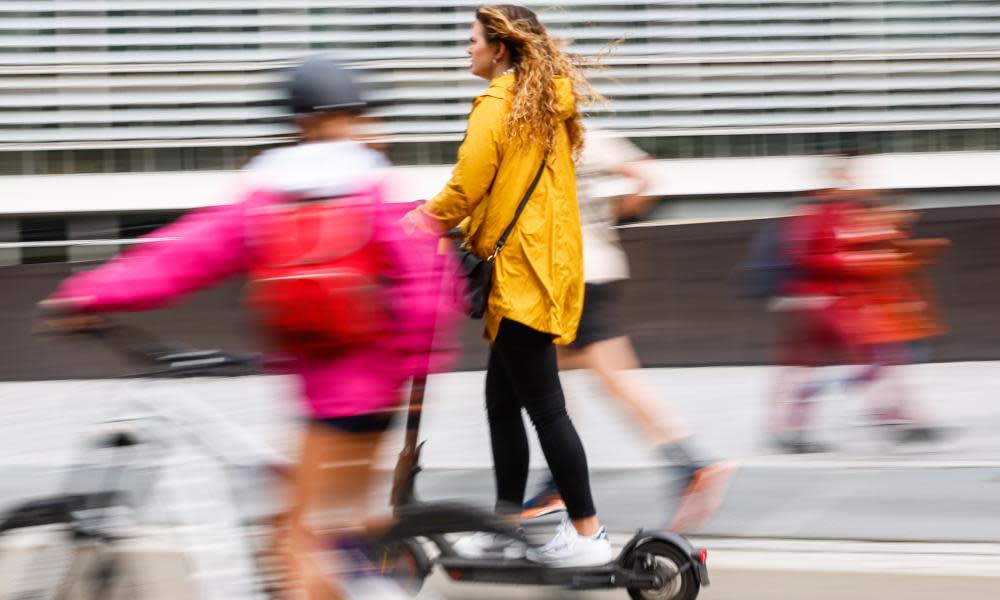We may tut as e-scooters whizz by, but they aren’t the menace we should fear

Nothing feels better than vindication. As a pedestrian/cyclist/driver, I’m obviously with everyone else tutting at e-scooter riders zooming on/off pavements and in/out of traffic. How dangerous, I mutter to myself, while secretly being impressed by the progress of technology that has seen these new devices go from nowhere to everywhere in just a few years (they hardly existed pre-2018).
You might think this is just me not dealing well with being overtaken by someone far less sweaty as I pedal into the office each day. But luckily a new report fully justifies my blind prejudice. It examines the impact on traffic accidents of the rollout of shared e-scooter services in 93 cities across six countries in central Europe and Scandinavia.
The arrival speeds up some people’s journeys, but at the price of more traffic accidents. Specifically, there was an 8.2% increase in accidents reported to the police in the average month after shared e-scooters were introduced. The extra accidents were heavily concentrated in the summer because that’s when it’s fun (or at least dry) to be on a scooter.
Now you might conclude that this means we just need to ban scooters. But the research provides rather more useful lessons for policymakers. Traffic accidents particularly rose in cities with high car densities, and hardly at all in those well-adapted to cyclists – for example, because they have lots of bike lanes. E-scooters, and e-bikes, are important parts of the future of urban travel in a net zero world, so the real lesson is that we need to sort out our infrastructure to match that reality. In the meantime, it’d be great if their riders could stop shooting past me. It’s dangerous for me and my self esteem.
• Torsten Bell is chief executive of the Resolution Foundation. Read more at resolutionfoundation.org

 Yahoo Movies
Yahoo Movies 
